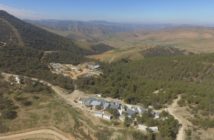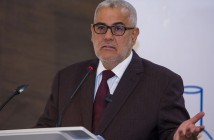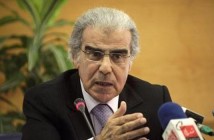06/10 03h13
by Sebastian Smith – NEW YORK (AFP)Thousands of anti-corporate demonstrators backed for the first time in large numbers by trade unions poured into New York’s financial district Wednesday, raising the stakes in a more than two-weeks long street revolt.
At least 5,000 people, with streams of reinforcements arriving all the time, crammed into Foley Square in lower Manhattan, where the city’s courts and government buildings are located. They then marched toward Wall Street.
Union officials estimated the number at 8,000 to 12,000 and it was clearly the biggest protest yet for the fledgling movement.
The mood was festive, with some even bringing babies, but there was also defiance as the crowd chanted: “This is what democracy looks like!”
What started last month as a ragtag sit-in protest against corporate influence and social inequality was transformed into a bigger, more serious event with the arrival of major unions including the AFL-CIO, United Auto Workers, Transit Workers, and teachers’ union.
Unions brought numbers and organizational skills to the rally, which, unlike others staged throughout the Occupy Wall Street protest, was authorized by the police.
And in another sign that the initial, youth-led campaign of civil disobedience had gained momentum, Democratic politicians for the first time voiced support for what some analysts are starting to herald as a potential left-wing rival to the conservative Tea Party movement.
A similar demonstration, with a focus on protesting the US war to subdue the Taliban in Afghanistan, was planned for Thursday in Washington.
In New York, crowds banging drums and carrying signs like “Save our Republic” and “Equality, democracy, revolution,” crammed into the narrow, teeming streets around the financial district, symbolic headquarters of the US financial system.
Chanting “we are 99 percent,” the loosely woven coalition of protesters flooded through lower Manhattan, watched by large numbers of police, who did nothing to intervene, other than to keep traffic flowing.
“More numbers, more power, more publicity,” said Kelly Wells, 26, who said she came all the way from Oregon on the US west coast to join the peaceful street rebellion.
However, police made clear that Wall Street itself was off limits, barricading the famous thoroughfare leading to the New York Stock Exchange to all but residents and local employees.
Protestors have a huge list of grievances, ranging from the mountain of US student debt to shrinking retirement benefits for the elderly, as the United States struggles to regain its once powerful economic stride.
“Something is wrong in America,” said Charles Jenkins, director of Local 100 of the Transport Workers Union, who spoke to the crowd from a makeshift podium. “When students went out of college and they can’t find a job, something is wrong”
The protesters’ main anger is directed at corporate influence in politics and the government bailout of financial institutions in 2008. It also comes against a backdrop of dismay at the lack of leadership from either President Barack Obama’s Democrats or the opposition Republicans a year from a presidential election.
“I think everyone out here feels robbed. They are struggling to make a living, to keep a roof over their heads, they’re struggling to pay student loans,” Lindsey Personette, a 29-year-old dancer, said.
“This is a revolution. This is not going to go away. It’s only going to get bigger.”
As the protests — ignored initially by much of the media — grabbed growing attention, New York’s liberal congresswoman, Louise Slaughter, gave the demonstrations her blessing.
“I’m so proud to see the Occupy Wall Street movement standing up to this rampant corporate greed and peacefully participating in our democracy,” she said in a statement.
Also joining the protest movement were students, who, according to the Occupywallst.org website were staging a national walkout.
The march was backed by members of the United Federation of Teachers, which represents most of New York’s public school teachers, as well as the Workers United and Transport Workers, which represents many of the city’s bus drivers.
The Professional Staff Congress-CUNY (PSC-CUNY), which represents more than 20,000 professors and staff at the City University of New York, also gave its support.
The movement has had widening support, with franchises cropping up in towns and major cities across the United States, in Boston, Chicago, Los Angeles and elsewhere.
The Washington protest dubbed Stop the Machine shows signs of similar levels of organization to New York, with a website http://october2011.org/statement, and preparations for people to camp out in the capital starting Thursday.
‘Anti-Wall St.’ protest in New York
Share.







